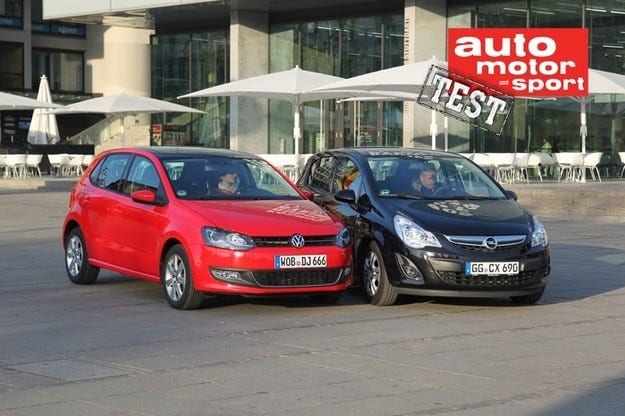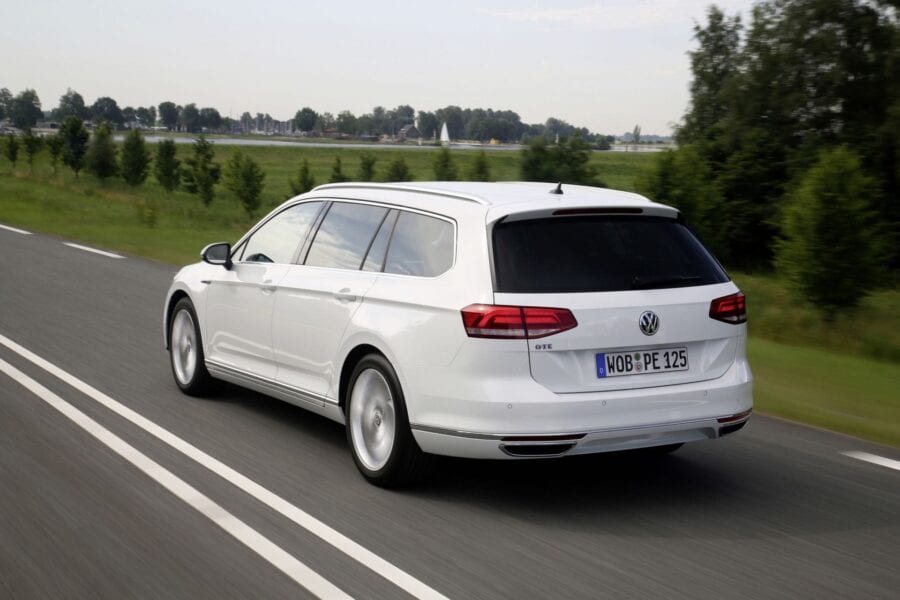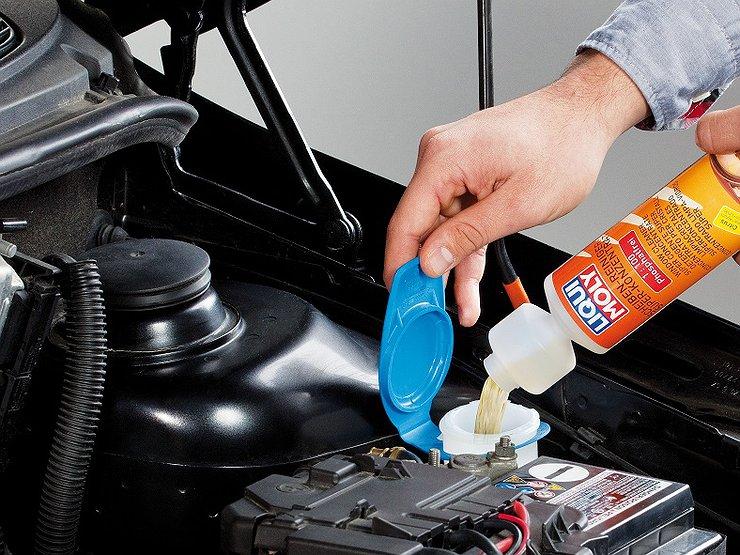
Test drive Opel Corsa against VW Polo: Economy - the mother of pleasure
Content

Ecoflex vs. Blue Motion Technology - despite their fuel-efficient engines, the Opel Corsa and VW Polo do not want to be seen as mobile declarations of abstinence. Who saves more pleasantly?
Deep insiders in conspiracy theory have long known that the emissions-free engine was invented long ago, but its drawings were immediately classified and hidden until further notice in car safes. The motive behind this secret is crystal clear - to guarantee the profits of the oil giants for as long as possible.
The less, the better
On the other hand, a look at the price list of the VW Polo shows the fierce battle that engineers are forced to wage for every drop of precious fuel. If you focus on the most cost-effective conventionally powered version in the form of VW Polo Blue Motion with a three-cylinder diesel engine and CO2 emissions of 87 grams per kilometer, you will be faced with interesting solutions - four doors are possible only if you refuse heavy air conditioning, and the desire to save has excluded from the list of equipment model even things like more powerful audio systems.
The proof that it is possible to do without such deprivations is there - with its 94 and 96 grams per kilometer, respectively, Opel Corsa 1.3 CDTi Ecoflex and VW Polo 1.6 TDI Blue Motion Technology emit a slightly higher amount of CO2, but offer much more - sophisticated as manners of operation four-cylinder engines with a relatively decent power of 95, respectively. 90 hp, as well as a wide selection of additional equipment for comfort.
After the facelift
After the modernization of the model in early 2011, the face of the Corsa came significantly closer to that of the Meriva and Astra. The start-stop system in the Ecoflex version ensures that the engine runs only when necessary, helping to save half a liter of fuel per hundred kilometers in urban traffic. The additional equipment package that accompanies the start-stop system also includes a reinforced starter, a gearbox with longer gears, aerodynamic improvements and a reduced ground clearance of 20 mm. But the most impressive proof of the engineers' efforts to reduce fuel consumption is the fact that the tank of the Ecoflex version is five liters smaller than that of conventional Corsa variants.
Despite the long gears, the familiar 1,3-liter engine pulls briskly and with commendable consistency, accompanied by tangible and typical diesel noise, and acceleration is felt even beyond the speed limit allowed on the highway. The start-stop system works extremely well, the start of the Common Rail-diesel at traffic lights is instantaneous, and the silence when the engine is off is a serious plus in terms of the comfort of the Ecoflex version.
The economy is also worth the money - even the average achievement of 5,3 l/100 km in a fairly dynamically conducted test is worth it, and long-distance transport with four people in the compartment becomes a serious alternative not only to budget airlines. With an emphasis on economy and driving on the standard route for measuring fuel consumption of auto motor und sport, only 3,9 liters of diesel per 100 km were recorded, which means that even in this version the tank would be enough to travel over 1000 kilometers.
The big competitor
The fact that the combination of a diesel engine and a small car has no reason to worry about the onset of alternative propulsion vehicles is also evident in the performance of the Polo with its optional Blue Motion Technology package. On average in the test, the model from Wolfsburg registered one tenth of a liter higher consumption than the Corsa, but on the standard route of the ams managed to achieve a remarkable 3,7 l / 100 km. Thanks to its higher torque, the 1,6-liter engine demonstrates better traction than its competitor and requires less frequent gear changes. The differences are even greater in terms of the manners of the two engines, as the rough CDTi definitely has something to learn from the deep timbre and soft operation of the TDI engine.
In general, the comfort of the VW model demonstrates a completely different class. While the Corsa's undercarriage, with its shortened suspension travel, fails to filter out sharp shocks and resonates perceptibly over long undulating road bumps, the Polo's smooth demeanor quickly makes passengers forget they're traveling in a small class car. Far above the standards of the class are the excellent noise insulation, leaving out the noises from the contact with the road and the oncoming air flow, as well as the excellent quality of the performance. From the soft materials of the instrument panel with precisely working switches, through the comfortable seats with a wide range of adjustment to the last corner of the trunk upholstered with quality material, you can see a precision and attention to detail that could put quite a few representatives of the upper class of cars to shame.
Who is more obedient?
The Polo performs better and as a road dynamics, obediently follows the direct commands of the very sensitive steering system and behaves neutrally and easily controlled until you reach the limit mode in a corner. The Corsa is far from the pleasure of driving with its very indirect handling and not very precise transmission when changing gears quickly. In addition, the Opel model shows an earlier tendency to understeer and may lose optimal road contact in the event of undulating bumps.
In terms of interior space, however, the recently updated Opel model performs better. The rear seat passengers of the Corsa have more space and space for the heads, and the volume of the luggage compartment is larger. In addition, the inclination of the rear backrests can be changed, adding a few liters to the capabilities of the trunk.
Although the Corsa looks noticeably more modest than its rival in terms of material quality and workmanship, its price is not much lower. The Satellite version tested (with a good level of equipment, including a leather-wrapped steering wheel, air conditioning and an audio system with a CD player) is only € 400 cheaper than the Polo in the Highline version, which in turn includes even more rich equipment with elements such as seat heating, parking sensors and a number of other amenities. Nevertheless, the Opel model managed to secure the victory in the cost section thanks to its more generous warranty conditions.
Despite its impressive fuel economy, the overly rigid Corsa and its rugged engine fail to beat its Wolfsburg competitor. VW engineers have done a better job of "sharpening" the cost without significantly affecting comfort and quality - and in its economical version, the Polo can be classified as a small car class just because of its size.
Text: Dirk Gulde
a photo: Hans-Dieter Zeufert
Evaluation
1. VW Polo 1.6 TDI BlueMotion Technology - 535 points
The cultured, economical, solidly made and pleasant to drive Polo wins first place in this comparison. The model is more noticeable than Opel only in terms of warranty conditions.
2. Opel Corsa 1.3 CDTi ecoFLEX - 490 points
The Corsa offers a slightly more spacious and flexible interior, and at the same time demonstrates an enviable potential for fuel economy. In terms of comfort, handling and workmanship, however, the model lags behind its opponent.
technical details
| 1. VW Polo 1.6 TDI BlueMotion Technology - 535 points | 2. Opel Corsa 1.3 CDTi ecoFLEX - 490 points | |
|---|---|---|
| Working volume | - | - |
| Power | 90 k.s. at 4200 rpm | 95 k.s. at 4000 rpm |
| Maximum torque | - | - |
| Acceleration 0-100 km / h | 11,3 with | 11,7 with |
| Braking distances at a speed of 100 km / h | 39 m | 40 m |
| full speed | 180 km / h | 177 km / h |
| Average consumption fuel in the test | 5,4 l | 5,3 l |
| Base Price | 19 200 euro | 28 740 levov |
Home " Articles " Blanks » Opel Corsa vs. VW Polo: Economy - the mother of pleasure

